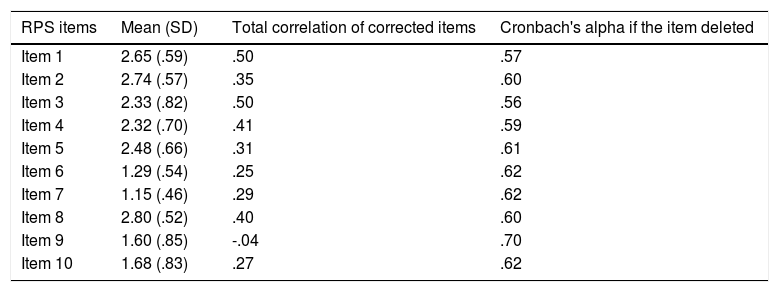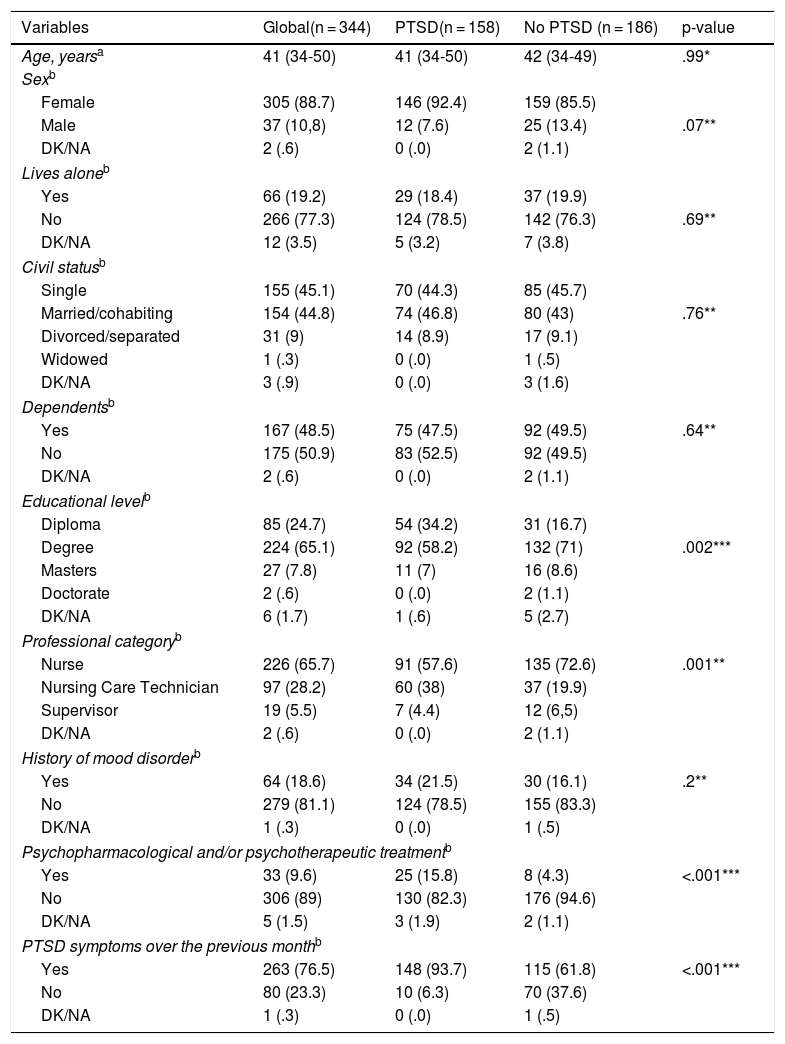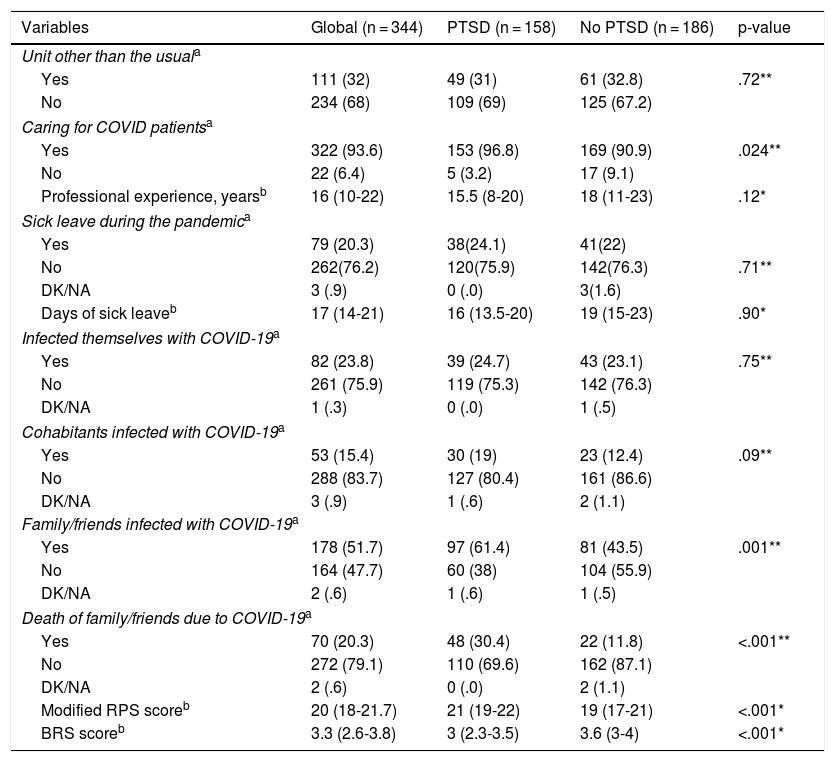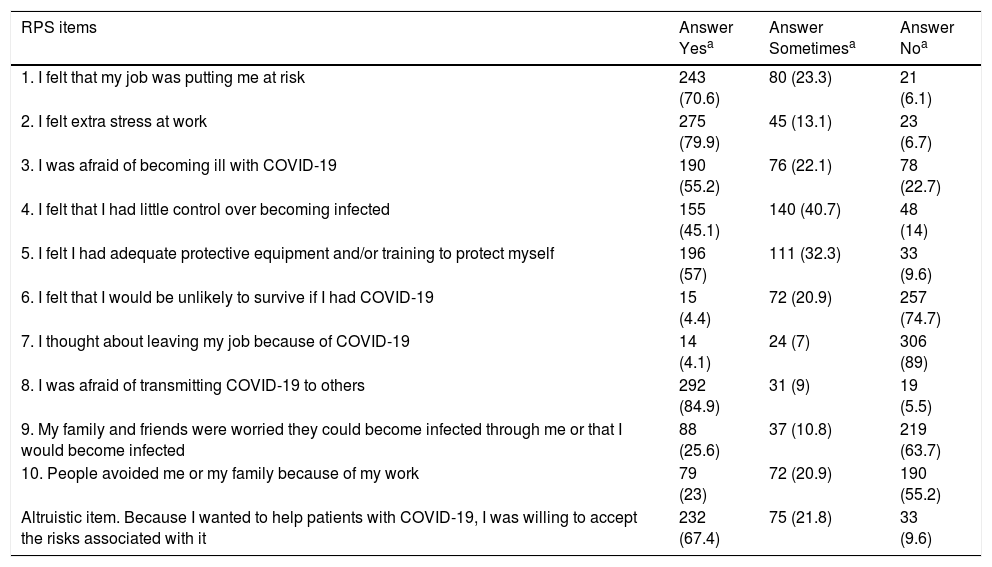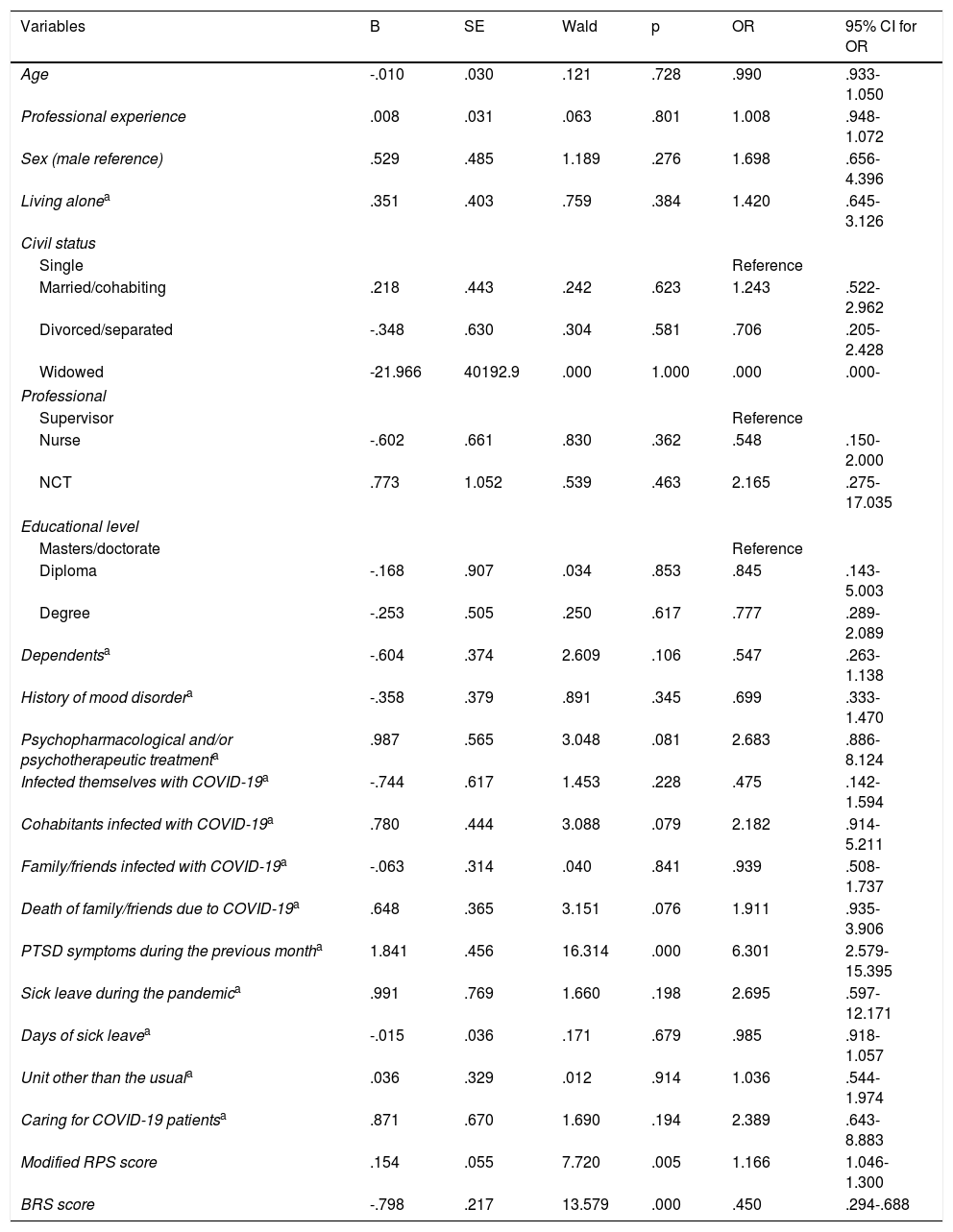To analyse the prevalence of post-traumatic stress disorder (PTSD) in nursing staff and the variables that may contribute to its development.
MethodCross-sectional study using a self-administered questionnaire given to nurses, nursing assistants and nursing supervisors in June 2020. It included sociodemographic, mental health, occupational, COVID-19 related variables, Modified Risk Perception Scale (modified RPS) score, Brief Resilience Scale (BRS) and Davidson Trauma Scale (DTS) score for the assessment of PTSD. Descriptive, bivariate, and multivariate analyses were performed.
ResultsOf the 344 participants, 88.7% were women and 93.6% cared for infected patients; 45.9% had PTSD (DTS≥40). The variables associated with PTSD were previous PTSD symptoms (OR=6.1, 95% CI [2.68-14.03]), death of a family member or friend due to COVID-19 (OR=2.3, 95% CI [1.22-4.39]), and higher scores on the modified RPS (OR= 1.1, 95% CI [1.07-1.31]). Higher BRS scores were associated with a lower risk of PTSD (OR=0.4, 95% CI [0.31-0.68]).
ConclusionsThe prevalence of PTSD in nursing staff is high, mainly in professionals with previous PTSD symptoms, family members or friends deceased from COVID-19, high risk perception and/or low resilience.
Analizar la prevalencia del trastorno de estrés postraumático (TEPT) en el personal de enfermería y las variables que pudieran contribuir en su desarrollo.
MétodoEstudio transversal mediante un cuestionario autoadministrado a enfermeras, técnicos en cuidados de enfermería y supervisoras de enfermería en junio del 2020. Incluía variables sociodemográficas, de salud mental, laborales, relacionadas con la COVID-19, puntuación de Escala de Percepción de Riesgo modificada (PRS modificada), Escala Breve de Resiliencia (BRS) y Escala de Trauma de Davidson (DTS) para la evaluación del TEPT. Se realizó análisis descriptivo, bivariado y multivariante.
ResultadosDe los 344 participantes, el 88,7% eran mujeres y el 93,6% atendieron a pacientes infectados. El 45,9% presentaba TEPT (DTS ≥40). Las variables asociadas con padecer TEPT fueron haber presentado síntomas del trastorno previamente (OR= 6,1, IC 95% [2,68-14,03]), el fallecimiento de algún familiar o amigo por la COVID-19 (OR= 2,3, IC 95% [1,22-4,39]) y presentar las puntuaciones más elevadas en la PRS modificada (OR= 1,1, IC 95% [1,07-1,31]). Las puntuaciones más altas en la BRS se asociaron con menor riesgo de padecer TEPT (OR = 0,4, IC 95% [0,31-0,68]).
ConclusionesLa prevalencia del TEPT en el personal de enfermería es elevada, principalmente en profesionales con síntomas de TEPT previos, familiares o amigos fallecidos por la COVID-19, una alta percepción de riesgo y/o una baja resiliencia.
Artículo
Comprando el artículo el PDF del mismo podrá ser descargado
Precio 19,34 €
Comprar ahora








